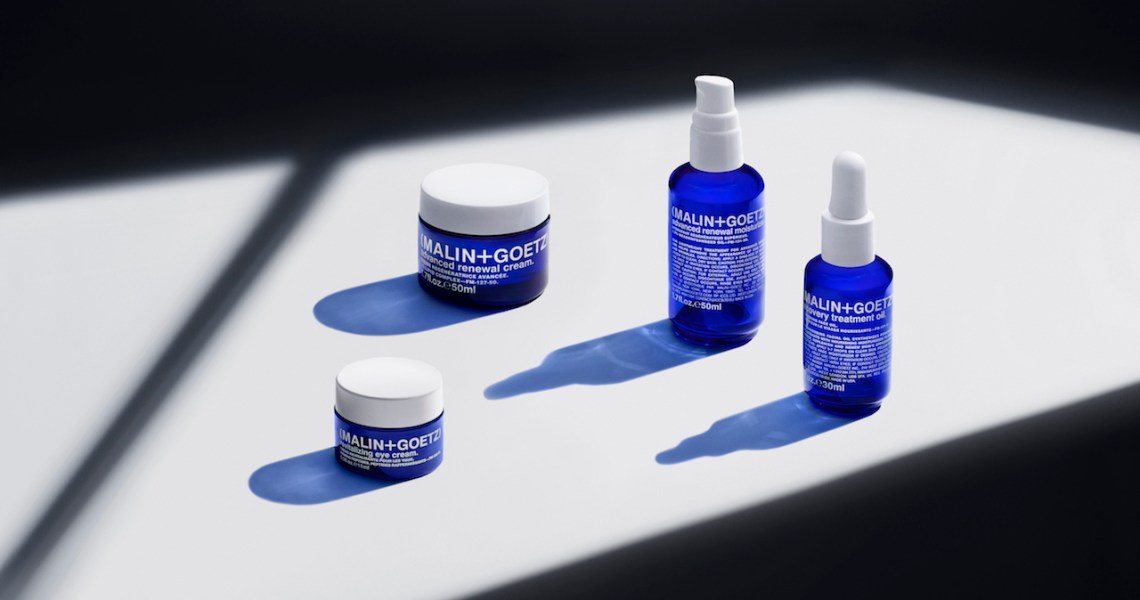As the move to be omnichannel and everywhere reaches fever pitch, natural apothecary company Malin + Goetz is taking a focused retail approach through its own direct-to-consumer site and three new stores.
Following the opening of its first San Francisco location in January, Malin + Goetz will open its first Williamsburg, Brooklyn, boutique and two additional stores in London beginning in the second quarter. This will bring its total footprint to 14 locations. Additionally, MalinandGoetz.com will also relaunch in the second quarter of 2019 to facilitate an easier shopping experience for its customers with more editorial content and the integration of its social media channels.
In 2018, Malin + Goetz saw a 22% revenue boost year over year, and its existing stores and sites in the U.S. and the U.K. make up 30% of total company revenue. Its e-commerce sites together account for more sales than any other channel.
“We are putting our foot on the gas and trying to expand more aggressively,” Malin + Goetz co-founder Andrew Goetz said of the 15-year-old brand. “We are big advocates of brick-and-mortar stores, and we are looking for unique neighborhoods in core cities that can support the brand.”
This is a far cry from what other beauty brands are doing to scale, as they see Sephora or Ulta Beauty as their main and sometimes only growth opportunity in the U.S. Korean beauty brand Peach + Lily, for instance, recently expanded its namesake collection, which exclusively launched on PeachandLily.com in July 2018, from 250 select Ulta stores to over 1,100 stores in March.
For Malin + Goetz, it has yet to pull the trigger on Sephora or Ulta, though it has been approached. It chooses instead to rely on its own stores and its smaller partners. In the U.S., it is available in 23 Space NK doors and 22 Nordstrom locations. (Those represent the largest third-party partnerships.) In total, the beauty brand is available in 600 luxury retail locations, fitness boutiques and hotels around the world.
“Distribution is a large piece of our business, and it has been since we launched,” said Matthew Malin, Malin + Goetz co-founder. “We have modeled our wholesale exposure separate from our free-standing shops and two websites to develop manageable and exclusive positioning by market with our existing national retailers.”
“Third-party wholesale is a way for us to be seen in the right hotel or right specialty boutique or right gym, but we are not saturated,” said Goetz. “If you can find us everywhere and anywhere, then you become homogeneous, and it’s too competitive within beauty right now for that.”
The upcoming Williamsburg location and two London stores are reflective of Malin + Goetz’s hope to be more available in denser markets. “London is a collection of villages, so it offers more expansive opportunities, whereas San Francisco is a city where our customer definitely is, but it is quite small. You don’t need 10 locations there.”
Stretching itself to second-tier markets like Chicago, Seattle and Dallas also currently isn’t in the cards, though other brands like Ipsy are looking for growth opportunities there. “Our customer is an urban and sophisticated customer, and that’s not to say that that doesn’t exist in Tulsa, but there isn’t enough of them there to be a reason we go there.”
The company reported that its customer demographic is split evenly between men and women, and that customers’ average age is 35 years old, up from around 28 to 30 when the brand launched.
Furthermore, store spaces available in second-tier markets have proven less accessible, and MalinandGoetz.com has become the go-to channel for those regions as of late.
“We have a 15-year-old business in Chicago, and it is very healthy from a wholesale perspective, but we don’t have a store there, because organically, we haven’t found a space that suits our neighborhood or community-led directive,” said Goetz. “We don’t want to open in a shopping center or Michigan Avenue, because that’s not our core customer and that’t not where they want us to be.”
Sign up for our new Glossy Beauty and Wellness Briefing, a weekly newsletter coming in April that will provide deep-dive analyses, emerging trends and insider insights in the growing beauty and wellness industries.




